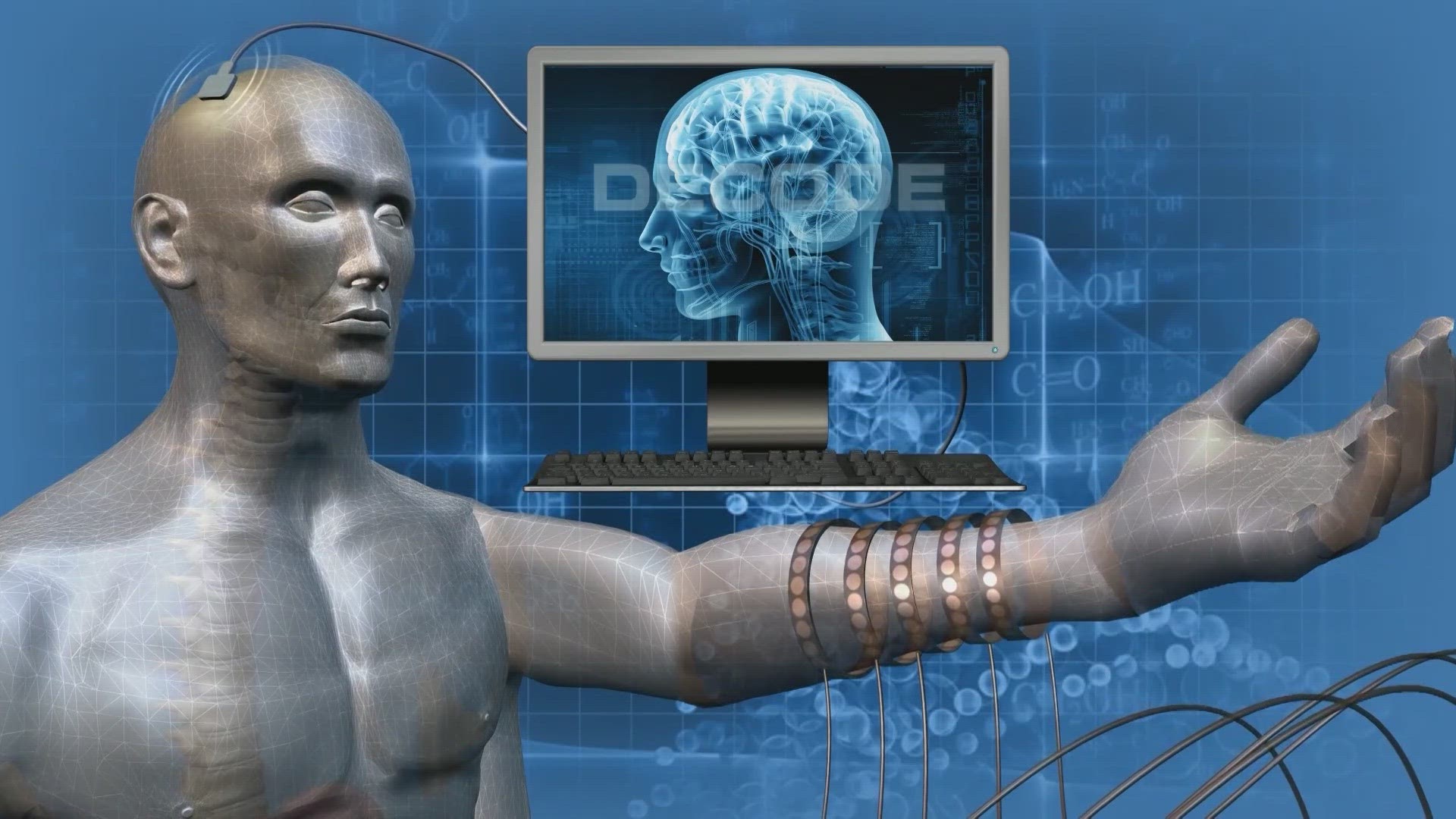HOUSTON — Ian Burkhart was an active teenager when he severed his spinal cord mid-chest in a diving accident in 2010.
In 2014, he had a microchip implanted in his brain.
"It essentially can listen in on when I'm thinking about moving my hands and they were able to decode those signals and feed that back to a device that stimulated the muscles on my forearm," he said.
The Ohio State University study meant that hundreds of hours of practice would be needed before Ian would be able to pick up a cup, swipe a credit card or even play Guitar Hero.
"We kind of focused on three different songs. I got a little bored of the songs over and over again," he said.
Ian's device had two parts.
"A chip on the surface of the brain but that leads to a connector piece that screwed into the skull that can be plugged into a computer," he said.
Since there’s an opening in the skull for the exterior connector piece, infection is always a risk with an implant like Ian had. So after seven years, in 2021, it was removed when the Ohio State Study ended.
There’s a major difference between Ian’s hard-wired implant and Elon Musk's Neuralink device recently inserted into a human for the first time which is wireless and fully implanted. That basically eliminates the ongoing risk of infection. Its goal is to improve communication for people with spinal cord injuries.
"I'm certainly excited about the Neuralink device. It's different in the sense that it's fully implanted. It has a bunch of different threads instead of one chip so it can record from a larger area in the brain," Musk said.
Neuralink has released very little information itself, but thanks to Musk, the implant has gotten a lot of attention.
Ian is now working with UH's BRAIN Center also doing neurotechnology work. He is a co-author of a meta-study reviewing existing research for a comprehensive look at brain implant research.
"There have been a total of about 67 people who have participated in research to use these devices to restore movement or restore communication like myself," Ian said.
UH said it hopes to publish its new study in about two months.

